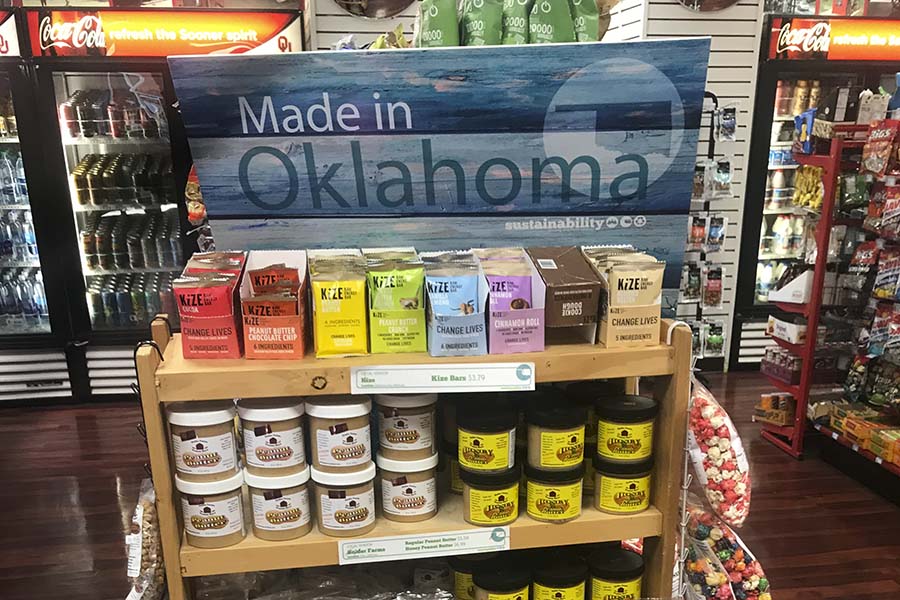Local Buying Process at the University of Oklahoma Food Services
Friday, November 16, 2018
By Kevin Barker, University of Oklahoma Housing Food Services
Let me start by providing an overview of the University of Oklahoma Food Services. We are an auxiliary operation at OU, which means we receive no state money, and we are required to support ourselves. We have 21 operations ranging from our “all-you-care-to-eat” restaurant to small coffee/snack shops. We serve more than 4 million customers per year. The most important thing for our potential partners to know is our business is very cyclical. We are busy from August to the middle of December and then from the middle of January to May. This means suppliers must be aware that business is much slower in the summer and during holidays.
When the OU Food Services first started focusing on buying local in about 2007, our first step was to evaluate what local meant to us. Here are the definitions we identified to help us categorize our food purchasing.
- Local Economic – Food that is available within a 250 mile (by roads) radius from OU and touched at the facility it originates (either repackaging or minimal processing).
- Locally Produced – Food that is available within a 250 mile (by roads) radius from OU and produced at the facility it originates (processed from a raw or incomplete state to a cooked or ready to cook status).
- Made in Oklahoma – Product comes from within the state’s contiguous border. Any food product in state comes under this definition. This is our preferred category for suppliers.
- “Real Food” – This is from the “Real Food Challenge” definitions. These criteria are available at its website but includes such categories as no GMOs and owned by a single person or a cooperative. This standard is very difficult to achieve with foods in Oklahoma.
The Real Food Challenge is a fascinating read for anyone who is interested in local. At this time OU is the largest school who is attempting the challenge and most of the schools involved are small private colleges located on either the east or west coast. These small school’s geographic advantages make it much easier for them to find local foods in all areas.
As of 2017, our food purchasing dollars were 43 percent in the above four categories, involving 76 companies. Our OU Food Service purchases were 32 percent of our total food purchases, and we want to continue these purchasing trends in the future. Our company counts are six companies that are local economic, 20 companies that are locally produced, 41 companies that are made in Oklahoma, and nine companies that meet “real food” status.
Using these definitions, we then evaluate based on quality and cost.
Our purchasing options are 1. Buy direct from local company or 2. Buy from local company through our prime vendor, and we can easily buy either way.
When we work with local vendors, we always want to make sure they understand we cannot be their only source of revenue, but we are willing to be the support that is needed to incubate the company. For example, when we first started looking for a source of cage-free eggs in 2007, we were able to develop a relationship with a small local provider from Shawnee, Oklahoma, for one of our operations. By 2017, this provider had grown to a cooperative of multiple farms, was supplying us with thousands of eggs per week and all our operations were using cage-free eggs. The supplier also was working with multiple other schools around Oklahoma that enabled them to not have to rely on us for all their income. This is the outcome we want for all small and growing businesses we work with.
Our other focus in our local buying practices is making sure our fiduciary responsibilities are being met. The first priority is cost efficiency – that means we have to be able to offer a product that our customers can afford and we can make the profit needed to support our continued growth. The second priority is keeping the money we spend in Oklahoma. This is why a product made in Oklahoma is preferred.
What does OU Food Services need from a supplier to have a good relationship?
- We need to have a consistent product at the best price you can offer.
- We require liability insurance, proof of inspection by the Oklahoma State Department of Health and financial documentation (W-9, sales tax permit).
- We need companies to regularly supply us. Don’t over-promise and be put in a position where you can’t supply us in a timely manner or the product supply runs out for extended periods of time.
- We need the supplier to understand we are a state institution, and payment will not be cash or the next day. We try to pay in a timely manner, but it will normally take at least 7 to 14 days.
- Sometimes it takes time to get the product in an operation that can utilize it effectively. It can take two weeks or two months to get a product established and selling in our operations. Patience with the process is necessary to keep doing business with the university.
Now that I’ve explained the criteria we use for local purchase, what suppliers need to aware of before they make contact with us to buy their product, what the suppliers need to do to keep our business and what OU Food Services is willing to do to help grow your business, the next step is for you to start making/growing/designing a product that we can and will utilize.
FAPC is where a small company can accomplish many of the above processes that are needed to run a successful business. FAPC can help you with food safety, marketing, product development, quality assurance, business plan reviews, navigate the licenses that are required and many other integral parts of success.
Buy local.

